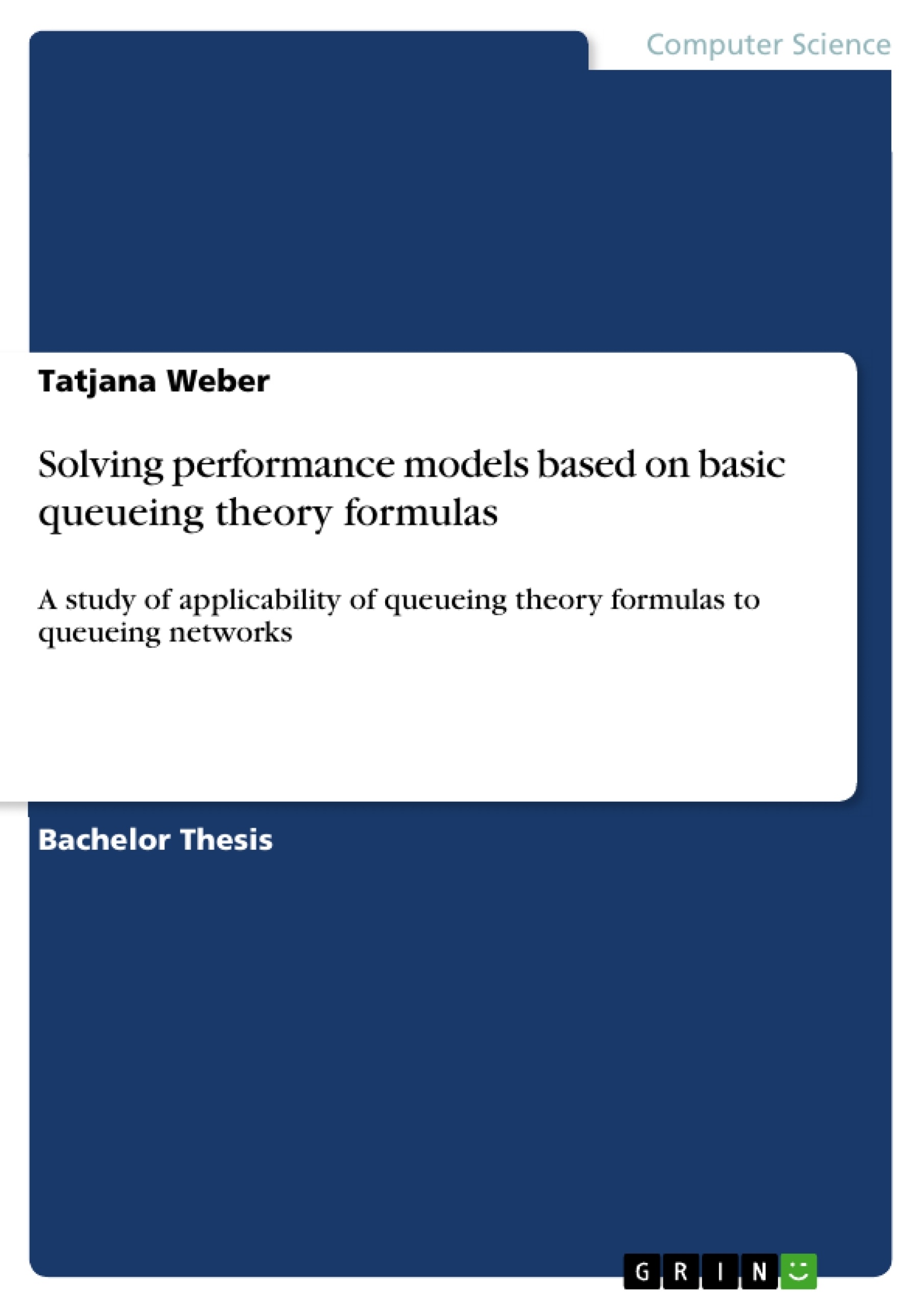The importance and complexity of modern IT systems increased in the last decades. To ensure resource efficiency and Quality-of-Service demands, performance evaluation is useful at every stage in the life cycle of an IT system. Simulation-based performance analysis has a wide application, but computational costs grow the more complex the system of interest gets.
However, analytical methods have a relatively high accuracy in the performance measures and in efficiency, so results can often be computed significantly faster. This thesis focuses on basic queueing theory. To represent complex IT systems Queueing Network models have been extensively applied. Possibilities and limitations of mapping basic queueing formulas on Queueing Network models are presented by using theoretical knowledge and practical comparison of a self-developed analysis tool with a simulation tool. Deviations in performance measures and savings on computational costs of the analytical solver are shown and by this the usefulness of analytical procedures will be underlined exemplarily.
Inhaltsverzeichnis (Table of Contents)
- Introduction
- Foundation
- Queues
- Queueing Networks
- Solving System-Level Performance Models
- Performance Measures and Typical Assumptions
- Generalized System-Level Model
- Goals and Approach
- Goals
- Approach
- Markovian Queue Solver
- Performance Formulas of Markovian Queues
- M/M/1 Queue
- M/M/m Queue
- M/M/1/∞0/N Queue
- M/M/m/∞0/N Queue
- M/M/1/K Queue
- M/M/m/K Queue
- M/M/1/K/N Queue
- M/M/m/K/N Queue
- Implementation
- Performance Formulas of Markovian Queues
- Mapping Performance Formulas of Markovian Queues on Queueing Networks
- Open Queueing Networks
- Queueing Networks with Tandem Topology
- Queueing Networks with Routing Probabilities
- Summary
- Closed Queueing Networks
- Discussion of Applicability of Basic Queueing Formulas
- Overview of Algorithms for Product-Form Queueing Networks
- Open Queueing Networks
- Evaluation
- Performance Measures of Queues
- Performance Measures of Queueing Networks
- Savings in Computational Costs
Zielsetzung und Themenschwerpunkte (Objectives and Key Themes)
This thesis aims to explore the applicability of basic queueing theory formulas to complex IT systems modeled as Queueing Networks. It investigates the potential and limitations of mapping these formulas onto such models by analyzing both theoretical knowledge and practical comparisons. The study leverages a self-developed analytical tool alongside a simulation tool to highlight the benefits and limitations of analytical procedures in performance analysis.
- Applicability of basic queueing theory formulas to Queueing Network models
- Comparison of analytical and simulation-based performance analysis methods
- Evaluation of performance measures and computational costs associated with analytical and simulation approaches
- Assessment of the usefulness of analytical methods in performance evaluation
- Exploration of the potential for applying basic queueing theory formulas to complex IT systems
Zusammenfassung der Kapitel (Chapter Summaries)
- Introduction: The chapter sets the context for the research by discussing the importance of performance evaluation in modern IT systems. It highlights the increasing complexity of these systems and the need for efficient resource utilization and service quality assurance. The chapter also introduces the concept of Queueing Network models and their application in representing complex IT systems.
- Foundation: This chapter provides a foundational understanding of queueing theory, including definitions of queues and queueing networks. It further explains how to solve system-level performance models, detailing important performance measures and common assumptions.
- Goals and Approach: This chapter outlines the specific research goals and the methodology employed in the study. It emphasizes the objective of evaluating the applicability of basic queueing theory formulas to Queueing Network models and the use of both analytical and simulation tools for comparison.
- Markovian Queue Solver: The chapter delves into the performance formulas of Markovian queues, covering different types of queues such as M/M/1, M/M/m, M/M/1/∞0/N, M/M/m/∞0/N, M/M/1/K, M/M/m/K, M/M/1/K/N, and M/M/m/K/N. It also describes the implementation of a Markovian queue solver for analyzing these queue types.
- Mapping Performance Formulas of Markovian Queues on Queueing Networks: The chapter focuses on applying the performance formulas derived for Markovian queues to different types of Queueing Networks, including open and closed networks. It discusses the applicability of these formulas to networks with various topologies, such as tandem and networks with routing probabilities.
- Evaluation: The chapter presents the evaluation of performance measures for both queues and Queueing Networks. It compares the results obtained using the analytical solver with those generated by a simulation tool, highlighting the computational cost savings achieved through the analytical approach.
Schlüsselwörter (Keywords)
The research focuses on performance evaluation of IT systems using Queueing Networks, applying basic queueing theory formulas to model and analyze these systems. The study involves comparing analytical and simulation-based methods, highlighting key performance measures, computational costs, and the benefits of using analytical procedures. Central themes include Queueing Theory, Queueing Networks, performance modeling, analytical methods, simulation, performance measures, computational costs, and resource efficiency.
- Quote paper
- Tatjana Weber (Author), 2017, Solving performance models based on basic queueing theory formulas, Munich, GRIN Verlag, https://www.grin.com/document/381269




